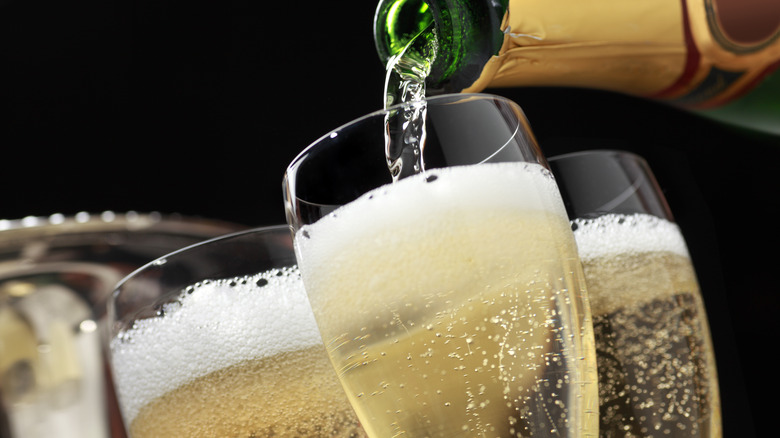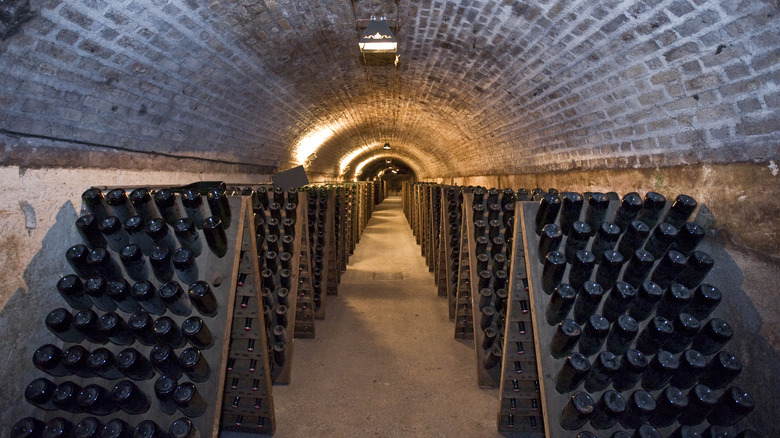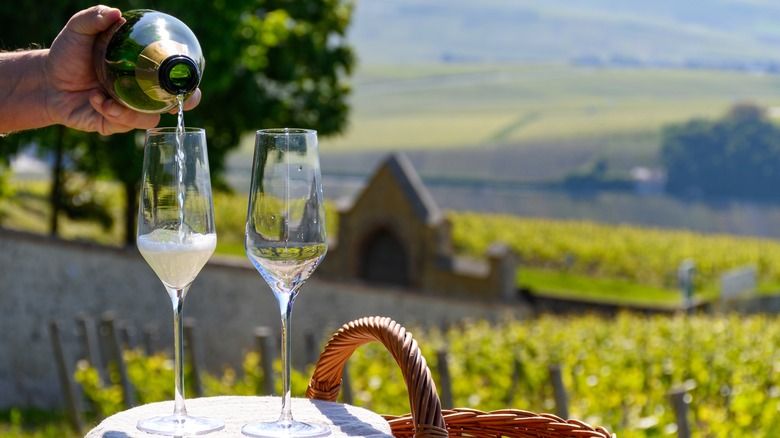How Well Do Sparkling Wines Typically Age?
Some wines have what it takes to age well and, if allowed to do so, can attain extraordinary complexity and nuance of character — even white wines. A well-made Spanish Rioja Blanco will become velvety and exquisite even after years in the cellar, as will some white peach-and-slate rieslings from Germany's Mosel Valley or certain bottles of honey-sweet Australian Semillon. So, how about sparkling wines — many of which are made from white wine grapes? How well do they typically age? The short answer is that they're not meant to and are usually made to enjoy right off the shelf. In other words, have you been saving your Champagne for a special occasion? Don't. Even quality wines like a prestige cuvée will lose their luster after 10 years or so.
In fact, if you're not in possession of an actual dated, vintage sparkling wine, drink that son of a gun with your loved ones right away — and even if it's a vintage Champagne, you should know that those already come pre-aged at least three years "sur lie" (or on the lees — a milky sediment of spent yeast and other particulates) in the barrel before bottling. Having said all that, you better believe that some sparkling wines can age beautifully for quite a few years.
What makes a sparkling wine age well?
First and foremost, aging a wine is pointless unless you can provide the right storage conditions. People call it "cellaring" not only because wealthy, wine-aging types have a cellar, but also because cellars tend to be consistently cool and dark, the two most important requirements for successful wine storage. The best bottles for storing sparkling vintage sparkling wine are the larger ones — magnum (1.5 liters) and up. This is for the simple reason that the wine-to-oxygen ratio is low, slowing the oxidation process, which makes wine taste tired.
Genuine long-haulers of the sparkling wine world are those which have been made with what the French call "méthode champenoise," or traditional method. This involves aging the wine on the lees, which imbues it with brioche-like flavors and aromas, followed by a temporary bottling "en tirage" (that is to say, with fresh yeast and sugar) for some weeks, after which the spent yeast precipitate matter is removed and the wine is bottled for sale. (Most sparkling wines are produced using the vastly cheaper Charmat method, which usually involves stainless steel tanks.) Lastly, buy vintage wines that have relatively low alcohol and pH because these are the other best qualities for successful aging. Low pH, high acidity wines tend to be produced in cooler climates at higher elevations.
Characteristics of an aged sparkling wine
Okay, let's say you've gotten your hands on a well-aged bottle of vintage bubbly (you lucky devil, you!). Assuming you've avoided these Champagne-drinking mistakes leading up to pouring that first glass, what can you expect it to taste like? For starters, you'll see a wine that is darker in color than if it had been freshly opened. It should have a tempting, toasty aroma and elegant mouthfeel, with notes of honey, dried fruit, and nuts — balanced by a fresh, citrus-peel acidity. Of course, all this depends on where the wine was produced as well as all the other variables previously discussed.
If you have the ability to age a quality sparkling wine yourself, go for it — goodness knows it will be cheaper than buying the same bottle 15 years later. Our advice is to carefully read the reviews of that particular vintage. The reviewer will tell you if this bottle is a runner. Otherwise, you'll be relieved to know that you can buy a range of terrific, aged vintage Champagnes for between $100 and $300. Obviously, this price can go much higher, but at that point (as with every bottle of wine) you'll end up splurging on rarity more than quality. Cheers!


